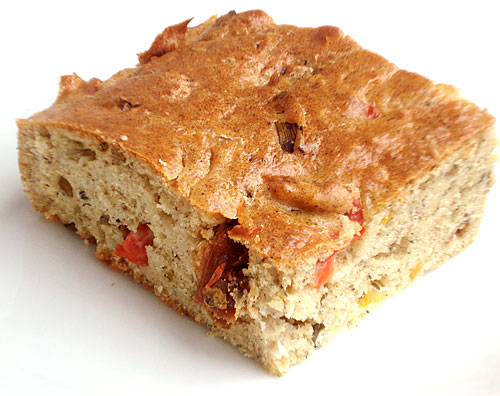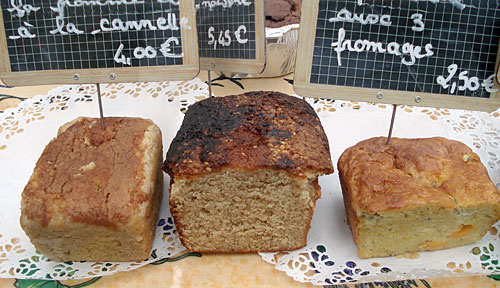
Throughout Provence, especially in the colder months, you often encounter stalls at the markets selling golden loaves of goodness called Cake Provençal. They look just like pound cakes or what we might call in the U.S. 'quickbreads', but they are made with savory ingredients. They usually contain cheese, olives, sautéed vegetables, ham, sausage, herbs and so on. They are great at dinnertime,for picnics and of course (since it's on this site) for not-Japanese bento lunches. Here are some that were on sale at a market in Nyons (in the Drôme Provençal) last December.

They are made exactly like sweet cakes, but this being the land of olive oil they use that instead of butter. My version here is a bit light on the olive oil (some cakes that I've tried are almost dripping with oil). I've added a very non-Provencal ingredient, kinako (toasted soy bean flour), to add nuttiness as well as protein. You could use chickpea flour instead of the kinako. A piece or two, or three or four, of this cake makes a great vegetarian bento, on its own or with a salad or raw vegetables packed along. You can also make very interesting sandwiches with it. (Try Boursin cream cheese with watercress.)
I made mine in a square baking or brownie pan instead of the traditional loaf pan, since I like to cut it into little squares, but you could make it in a loaf pan too. It freezes very well, which makes it a great 'freezer stash' item.